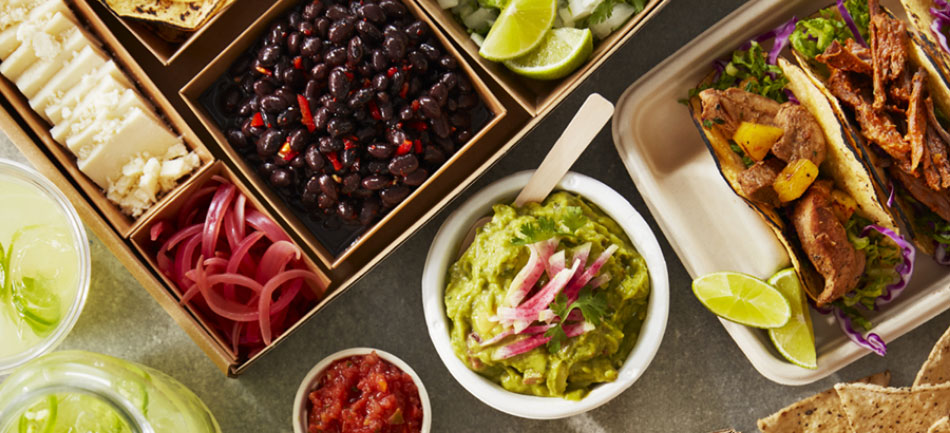Consumer interest in zero-waste restaurants is high, although it’s a relatively rare find in foodservice.1 The concept of “nose-to-tail” meat eating has been around for centuries, with Native communities utilizing all parts of the animals they hunted.2
In promoting ethical and sustainable meat consumption, 24% of consumers stated they would be willing to pay more or visit more frequently zero-waste restaurants.2
“After COVID and all the restrictions it presented, customers who go out are eager to reconnect, socialize and feel normal,” said Chef Jean.
“In more mainstream restaurant concepts, following a true nose-to-tail approach is extremely challenging,” explains Chef Jean. “Offal being the primary reason. “Americans ate offal during the war since those items were not rationed and offered great nutritional benefits. When things became more prosperous, offal fell out of favor for higher-end options.”
Next comes the issue of having a back of house that knows how to use the byproducts of butchering.
“Parts of the animal which require curing, brining and deeply involved processing is challenging from a health regulations standpoint; they are extremely work-intensive to produce, preserve and offer.”
And while zero-waste may remain a niche for now, strong consumer interest drives innovation. Keep an eye out in 2023 for breakthrough sustainable restaurants honing the concept.
Dine-in continued to recover in 2022, reaching a 39% share of global foodservice visits.3 Still, over a third of consumers are socializing less often and entertaining more at home — and when they do go out, few are looking to downgrade their dining experiences.4
“After COVID and all the restrictions it presented, customers who go out are eager to reconnect, socialize and feel normal,” said Chef Jean.
Restaurants looking to enhance experience across the board need to consider convenience, service, ambiance, and the ability to socialize. Things like family style service and shareable items served in an environment that fosters a sense of community, will play a substantial role in ensuring that consumers see the value in eating out at their locations.4
If restaurants are still looking for a reason to pass on the plastic, consider this: Nearly a quarter of consumers would pay a deposit to use reusable containers from foodservice, something only 15% of operators currently offer.1
Interest in reusable containers, regardless of whether they have to be returned, is strong, along with a sustained high interest in cups that don’t need straws (or simply not offering straws).1
According to Datassential’s Keynote Report on Sustainability, 63% of diners are more likely to visit restaurants that can, preserve, pickle, or ferment foods. Additionally, 14% are willing to pay more or visit more frequently places that feature upcycled ingredients in their dishes.
Where are diners looking for deals?
39% – coupons that come in the mail
32% – restaurant or delivery apps
Source: Datassential Hotshots Value vs. Convenience, October 2022
As an added benefit, canned and preserved products can let restaurants dip their toe into the retail side of things.
The good news: Two in three consumers would like to dine out more than they already do.5 But as any operator knows, getting them to your establishment regularly is a tall order.
“Any deal aimed at saving money will drive business,” said Chef Jean. “Frequent diner deals, early bird deals and discounts on popular items always help convince consumers looking for a bargain when deciding where to eat.”
With 25% of consumers willing to join a loyalty club if it offers an affordable dining incentive for signing up,5 restaurants should look at what gives their customers the sense of getting an upgraded experience without added cost, i.e., new offers with underutilized cuts.
Minimize Change, Maximize Excitement
One thing not changing in 2023 is labor issues. In light of the ongoing labor gap, operators are striking a balance between innovation and simplicity with sustainable results.
Using existing items within the operation to enhance presentation, rethink ingredients, change portioning or create unique mashups bring new energy to a menu. “Creativity does not only apply to cooking,” said Chef Jean. “Making a simple item look like a well-crafted dish, offering flexibility and allowing mix and match helps.”
Get It in Writing
Claims like “Farm raised” and “farm to table” labels are well into the adoption phase, readily found at trendy restaurants and specialty grocery stores.6 Owners may be surprised that when it comes to telling people about their sustainability efforts, they have little interest in waitstaff describing it.2
48% prefer notes on menus
41% prefer signage at the establishment
39% prefer social media
Source: Datassential Hotshots Value vs. Convenience, October 2022
However, there is a caveat. “The Chef holds the key” said Chef Jean. “Sourcing is a major part of a Chef’s job. They are the one authority customers trust. Visiting the dining room, engaging with them, and making them part of their efforts are crucial.”
1 Datassential Keynote Report Sustainability, October 2022
2 Trend Hunter 2023 Trend Report
3 Technomic Global Food and Beverage Trends – November 2022
4 Datassential Keynote Report Money and Food, October 2022
5 Datassential Hotshots Value vs. Convenience, October 2022
6 Datassential Health & Wellness Inspiration Report, September 2022

